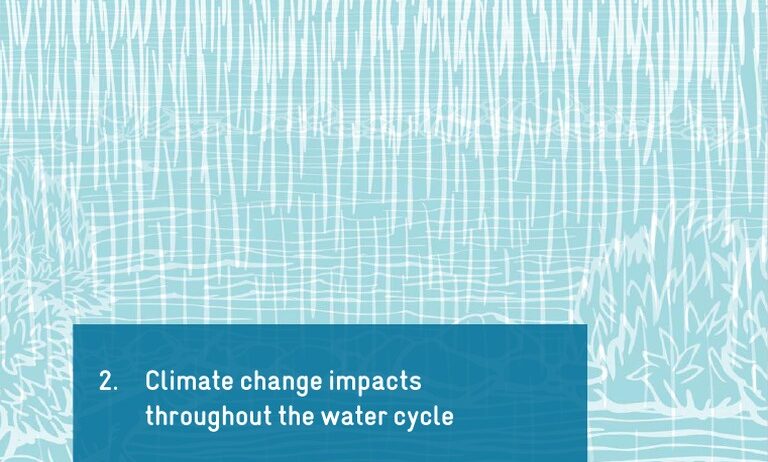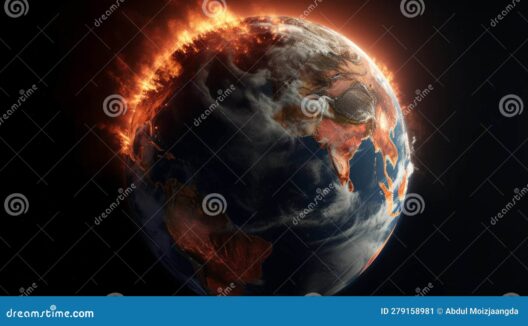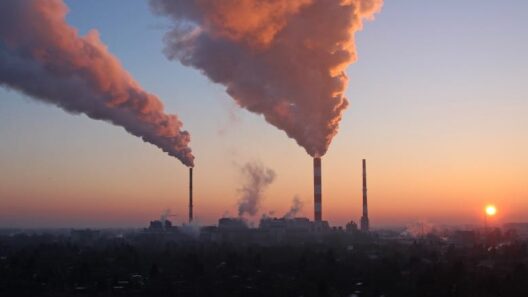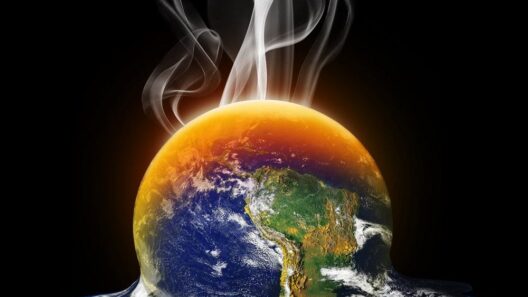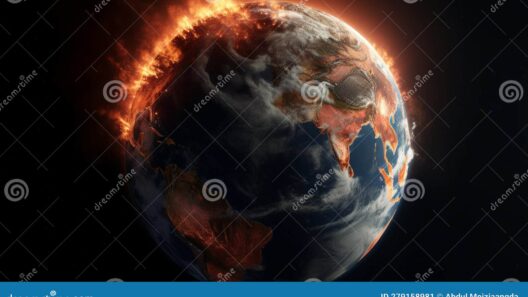Global warming is an omnipresent concern, underscoring the irrefutable connection between anthropogenic activities and the Earth’s climatic stability. As temperatures rise, the ramifications for our planet’s water cycle become increasingly pronounced. This interrelation cascades into a multitude of environmental repercussions, warranting an in-depth examination of how global warming influences both the water cycle and weather patterns.
The water cycle—comprised of processes such as evaporation, condensation, precipitation, and infiltration—is a critical mechanism that sustains life on Earth. This cyclical nature ensures that water is perpetually circulated through various states and locations. However, an increase in global temperatures disrupts this equilibrium, propelling a series of alterations that can be categorized into several key areas.
Firstly, let’s explore evaporation. Warmer temperatures will heighten the evaporation rate of water bodies—oceans, rivers, and lakes—augmenting the amount of moisture in the atmosphere. This phenomenon doesn’t merely pad humidity levels but leads to a significant uptick in precipitation intensity and frequency. While some regions may revel in the prospect of continuous drizzle, others will grapple with the extraordinary consequences of deluges that can result in severe flooding. The dichotomy of outcomes raises critical questions about water distribution and accessibility across varying geographical contexts.
Moreover, the escalation in evaporation catalyzes the formation of more vigorous storm systems. These storms not only grow more ferocious but also migrate in their trajectories, driven by shifting climatic zones. The frequency and intensity of hurricanes and tropical cyclones are forecasted to amplify, instigating widespread devastation along coastlines. Such changes herald a future where communities must adapt to increasingly perilous weather phenomena, reinforcing the need for robust infrastructure and disaster preparedness strategies.
In the same vein, the alteration in condensation patterns warrants attention. As the atmosphere becomes laden with moisture, it may lead to divergent cloud formation. This shift can yield torrential rains in certain locales while simultaneously precipitating droughts in others. The agricultural sector, in particular, stands on shaky ground, oscillating between the threats of too much or too little water. Such unpredictability compromises crop yields, threatening food security on a global scale, and thus affecting entire economies.
The concept of precipitation itself is also undergoing a transformation. Global warming has demonstrated a propensity to cloud the established patterns of rainfall distribution. As average global temperatures rise, traditional seasons could morph in unexpected ways. This phenomenon, known as climate change-induced seasonality, can result in unseasonably warm winters or prolonged dry spells in typically wet areas. The ripple effects can destabilize ecosystems, endangering flora and fauna reliant on predictable weather patterns for survival.
Drought, a less visible yet equally consequential aspect, emerges as a significant outcome of global warming’s impact on the water cycle. With higher evaporation rates, particularly in arid and semi-arid regions, the tension between water demand and supply becomes acutely pronounced. Aspirational projections of water availability can diminish, leading to socio-economic strife. As groundwater resources dwindle beneath the surface, communities may find themselves embroiled in conflicts over access to dwindling resources.
Conversely, snowpack—the snow accumulated in mountainous regions—serves as a critical water source in many areas, releasing its stored moisture during warmer months. Climate change poses a dual threat; warmer winters may lead to reduced snowfall while simultaneously hastening the rate of snowmelt. This duality can result in the phenomenon known as “flash floods,” exacerbating the water cycle by introducing abrupt torrents of water, overwhelming river systems and contributing to soil erosion.
Groundwater systems also find themselves grappling with the shifts triggered by global warming. The interplay between surface water and groundwater is intricate, relying on a delicate balance. As surface water flows become increasingly erratic and unpredictable, groundwater recharge rates may dwindle. Lower water tables can lead to a myriad of complications, from diminished agricultural productivity to adverse effects on potable water supplies.
As these systems are inextricably linked, feedback loops emerge, compounding the consequences of climate change. For instance, higher temperatures can lead to more evaporation, which, in turn, creates conditions ripe for drought. Conversely, increased precipitation can prompt flooding, leading to runoff that can pollute freshwater sources. Understanding these feedback mechanisms is crucial in devising effective strategies to mitigate the harmful effects of climate change on water resources.
Ultimately, the assertion remains: as global temperatures continue to rise, our atmospheric and hydrological systems will be irrevocably altered. The cascading effects on weather patterns and the water cycle demand an urgent response, uniting scientific inquiry with grassroots movements aimed at sustainability and conservation. Societal resilience must be bolstered through education, innovation, and policy reform that acknowledges the dual challenges of water scarcity and flooding. Climate projections are alarming, yet they also instigate avenues for revitalization and adaptation. As stewards of this planet, we are not powerless; understanding the intricate relationships defined by our evolving climate can empower us to forge a path toward equilibrium.
In conclusion, the nexus between global warming, the water cycle, and weather patterns demands our immediate attention and action. Collectively, we must commit to addressing this multifaceted dilemma, ensuring that future generations inherit a world that is not only habitable but vibrant and thriving.



